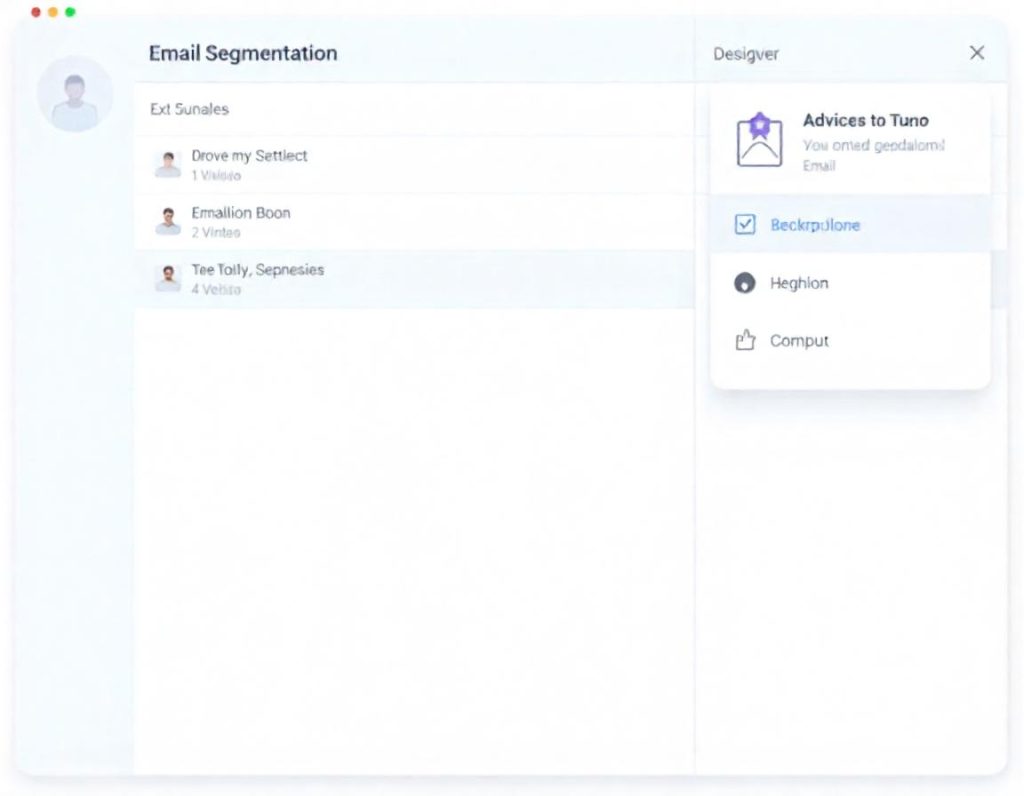Email segmentation is the process of dividing an email list into smaller, more specific groups based on certain criteria. This allows marketers to tailor their messages to specific segments of their audience, resulting in more personalized and effective email campaigns.
Importance of Email Segmentation
- Increases Engagement: Personalized emails that cater to specific interests or behaviors are more likely to be opened, read, and acted upon.
- Improves Conversion Rates: By targeting the right message to the right audience, you increase the likelihood of conversions, whether it’s making a purchase, signing up for a webinar, or downloading content.
- Reduces Unsubscribes: Sending relevant content reduces the chances of recipients opting out because they feel the emails are tailored to their needs.
- Enhances Customer Retention: By sending timely, relevant emails, you can build stronger relationships with customers, leading to repeat business and loyalty.
Learn How To Boost Your Sales Online
Types of Email Segmentation
1. Demographic Segmentation
Segment your list based on demographic factors like age, gender, location, income, job title, or education. This allows you to craft messages that resonate with the specific needs or interests of each group.
2. Behavioral Segmentation
Focus on customer actions and behaviors, such as past purchases, email opens, clicks, website activity, and engagement with previous campaigns. Behavioral segmentation helps send timely, relevant offers or reminders.
3. Psychographic Segmentation
Segment based on values, lifestyles, interests, and opinions. This could include interests related to specific product categories, values (such as sustainability), or hobbies.
4. Purchase History Segmentation
Group your subscribers based on their previous purchase behavior. For example, you can create a segment for high-value customers, repeat buyers, or customers who have only made one purchase. This allows for tailored post-purchase emails or promotional offers.
5. Customer Lifecycle Segmentation
Segment by where the customer is in their journey with your brand, whether they are new subscribers, leads, active customers, or repeat buyers. Tailor your messaging to their stage in the lifecycle to nurture relationships effectively.
6. Engagement Level Segmentation
Based on how often and how much recipients engage with your emails. Active subscribers can receive product updates or promotions, while inactive ones might get re-engagement campaigns or special offers to encourage them to return.
7. Geographic Segmentation
Segment by location to target customers with region-specific offers, events, or product availability. This is especially useful for businesses with physical locations or those offering location-based services.
How to Make Money as a Fashion Affiliate Marketer
8. Device-Based Segmentation
Segment based on the type of device customers use to read emails (mobile, tablet, desktop). This can help optimize your email layout for different devices, ensuring a better user experience and higher engagement.
How to Implement Email Segmentation
1. Collect Relevant Data
Ensure that you are collecting data that can be used to segment your audience effectively. Use signup forms, surveys, and tracking tools to gather information about your customers, including demographics, preferences, and behavior.
2. Define Your Segments
Identify the most valuable segments based on your business goals. For example, you may want to focus on high-value customers for special promotions, or you might want to target new subscribers with an onboarding email series.
3. Personalize Your Emails
Craft targeted email content that speaks directly to each segment’s needs and preferences. Use dynamic content blocks to tailor subject lines, images, offers, and calls-to-action based on the segment.
4. Automate Campaigns
Set up automated email workflows to nurture relationships with different segments. For instance, new subscribers could receive a welcome series, while inactive subscribers might get a re-engagement email.
5. Monitor and Analyze Results
Track key metrics like open rates, click-through rates, conversion rates, and unsubscribe rates to measure the effectiveness of your segmentation strategy. Make adjustments as needed to improve performance.
6. Test and Optimize
Conduct A/B testing to optimize subject lines, copy, offers, and send times for each segment. Testing helps ensure that your emails are as effective as possible.
Tools for Email Segmentation
1. Email Marketing Platforms
Platforms like Mailchimp, Klaviyo, and HubSpot offer built-in segmentation features, allowing you to easily create and manage segmented lists based on various criteria.
2. CRM Systems
Customer relationship management (CRM) tools like Salesforce or Zoho CRM help you store customer data and automate segmentation based on behavior, purchase history, or lifecycle stage.
Make Money in 7 Days as an Entertainment Blogger and Affiliate Marketer – The Easy Way!
3. Analytics Tools
Using analytics tools like Google Analytics and built-in email campaign analytics can help you track customer behavior on your website, allowing you to adjust segmentation based on engagement and conversion patterns.
4. Survey Tools
Tools like Typeform or SurveyMonkey allow you to gather more specific data from your customers to segment them more accurately based on their preferences and needs.
Blog Writing & SEO Optimization Services
Best Practices for Email Segmentation
- Segment Often: Regularly update your segments as customer behavior and preferences evolve.
- Avoid Over-Segmentation: Too many segments can complicate your strategy. Focus on a few key, high-value segments that will yield the best results.
- Test Segmentation Strategies: Regularly test different segmentation strategies to understand what works best for your audience.
- Respect Privacy: Ensure compliance with data protection regulations (like GDPR) by getting consent before collecting and segmenting customer data.
